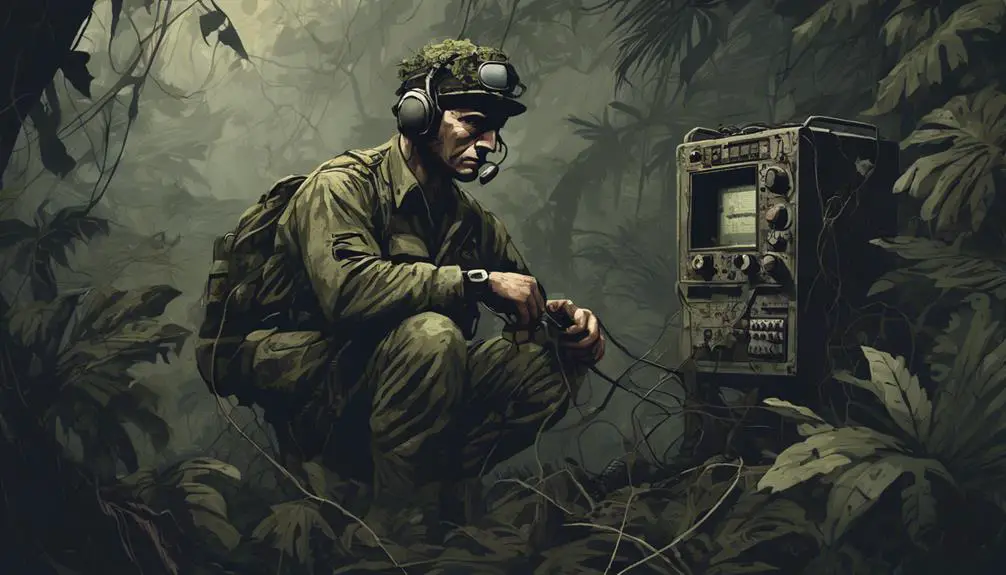You're familiar with military radio slang, but do you know the language and protocols that keep communication secure and efficient in high-stress operations? In the military, radios use call signs and identifiers to avoid confusion, and different channels are designated for specific purposes. The NATO phonetic alphabet is used to guarantee clear communication, and tactical communication codes provide clarity and brevity in high-stress situations. Secure transmission techniques, like frequency hopping and cryptic messaging, prevent enemy intercepts. As you'll see, mastering military radio slang is essential for successful missions – and there's more to explore.
Radio Protocol Basics
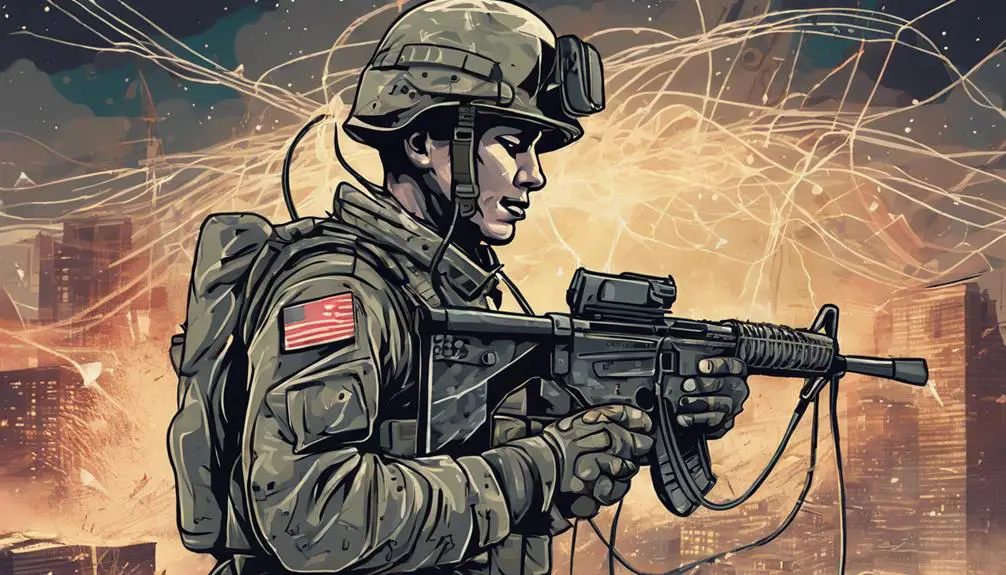
When you're communicating over radio, you'll need to follow established protocols to guarantee clear and efficient transmission of information. This is important in military operations where timely and accurate communication can be a matter of life and death. Radio Etiquette Fundamentals are essential in ensuring that communication channels remain clear and uncluttered. You should always identify yourself and your unit clearly, using call signs and identifiers to avoid confusion.
In a Communication Channels Overview, you'll learn that different channels are designated for specific purposes. For instance, you'll use one channel for tactical communications and another for logistical support. Sticking to the designated channels ensures that critical messages get through promptly. It's also crucial to keep transmissions brief and to the point, avoiding unnecessary chatter that can clog up the channels. By following these Radio Protocol Basics, you'll help maintain a smooth flow of information, enabling your team to respond quickly and effectively in any situation.
Phonetic Alphabet Essentials

You'll rely on the phonetic alphabet to clearly communicate critical information over radio, ensuring that essential details aren't lost in transmission. This standardized system is vital for clear and accurate communication, especially in high-stress situations. The phonetic alphabet has a rich history, dating back to the early 20th century when the International Telecommunication Union (ITU) developed the first phonetic alphabet. Over time, it has undergone significant evolution, with the US military adopting the NATO phonetic alphabet in the 1950s. This alphabet uses distinct words to represent each letter of the alphabet, reducing confusion between similar-sounding letters.
Understanding the phonetic alphabet is essential for effective radio communication. You'll use it to clearly spell out words, names, and other critical information, ensuring that recipients understand the message correctly. Familiarize yourself with the phonetic alphabet, and you'll be able to communicate confidently and accurately over radio. Remember, clear communication is key to successful missions, and the phonetic alphabet is a vital tool in your communication arsenal.
Tactical Communication Codes
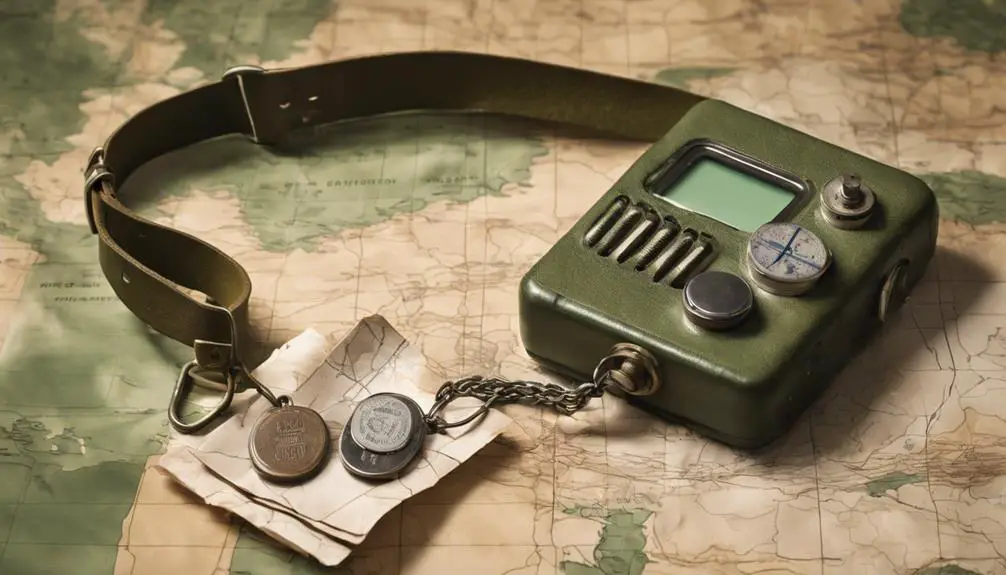
In high-stress, fast-paced situations, tactical communication codes provide an additional layer of clarity and brevity, allowing you to convey critical information quickly and accurately over radio. These codes are essential for efficient communication, enabling you to prioritize and convey important information in a concise manner.
When operating in hostile environments, it's important to maintain secure communication channels. This is where Crypto Keys come into play. These encryption keys ensure that your transmissions remain secure and protected from unauthorized access. By using the correct Crypto Keys, you can rest assured that your communications are safeguarded from interception and exploitation.
Additionally, understanding Signal Strength is crucial for effective communication. You need to be aware of the signal strength to adjust your transmission power and make sure that your message reaches its intended recipient. By combining tactical communication codes with an understanding of Signal Strength and Crypto Keys, you'll be well-equipped to communicate efficiently and securely in high-pressure situations.
Mission Critical Terminology
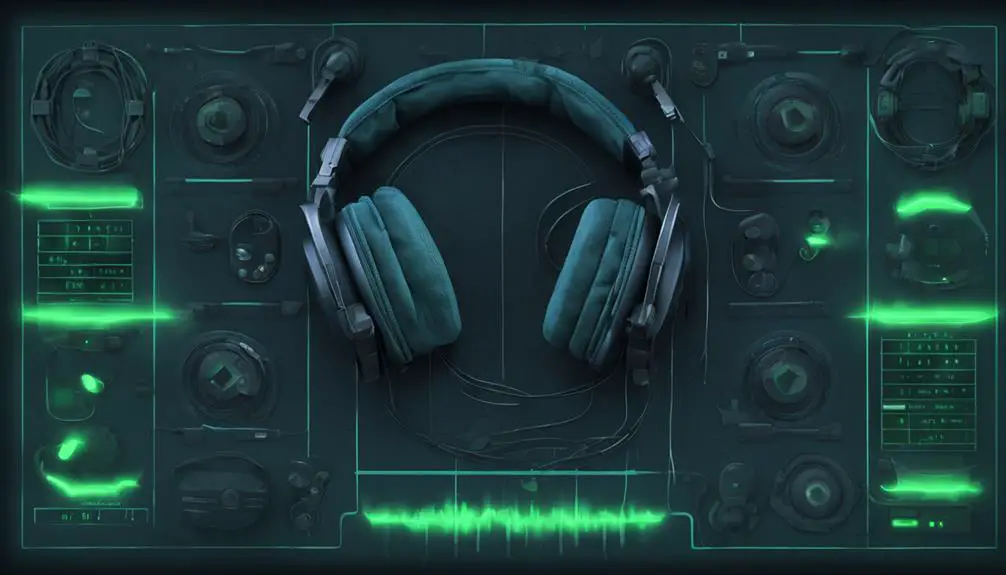
Military personnel and first responders depend on a shared vocabulary of mission-essential terminology to guarantee seamless communication during high-stress operations. You need to understand the lingo to stay ahead of the game. When it comes to radio communication, clarity is key. You'll hear terms like 'Frequency Hopping' thrown around – that's when you rapidly switch between different frequencies to avoid detection or interference. It's a clever tactic to stay one step ahead of the enemy.
In high-pressure situations, every second counts. You need to be able to convey complex information quickly and accurately. That's where knowledge of Communication Satellites comes in. You'll use them to transmit vital data back to HQ or coordinate with other teams. Knowing the terminology means you can focus on the mission, not decoding jargon.
In the heat of the moment, you can't afford to get bogged down in misunderstandings. Mastering mission-essential terminology ensures you're speaking the same language as your team. It's a matter of life and death. Stay sharp, stay informed, and stay one step ahead of the enemy.
Secure Transmission Techniques
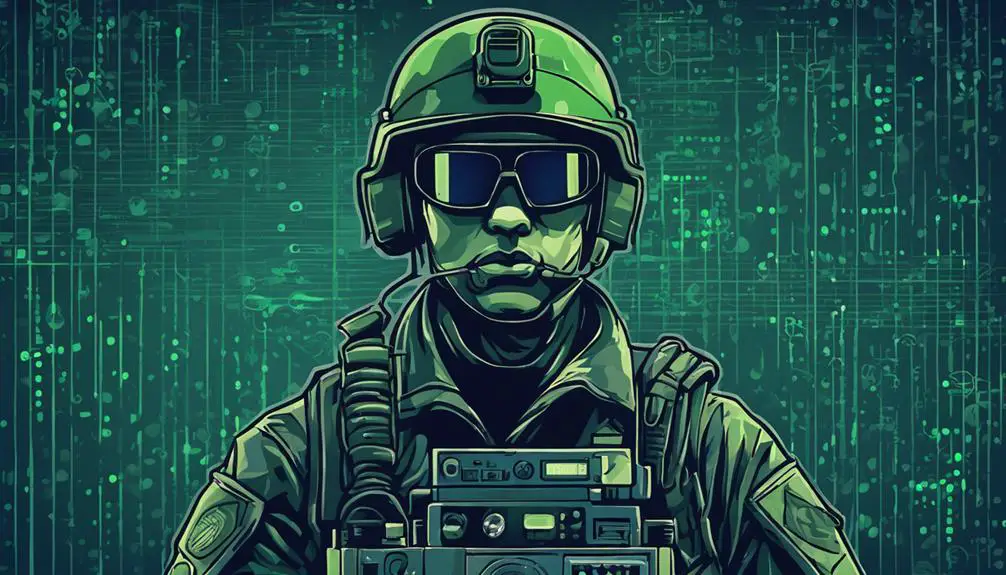
When transmitting sensitive information over radio, your voice is only as important as the technique you're using, and that's where encryption protocols like Frequency Shift Keying come into play. This method utilizes a shift in frequency to convey digital information, making it difficult for unauthorized listeners to intercept and decode your transmission. However, Frequency Shift Keying has its limitations, and that's where Frequency Hopping comes in. This technique involves rapidly switching between multiple frequencies, making it even harder for enemies to intercept your signal.
Another secure transmission technique you should be familiar with is Spread Spectrum. This method spreads your transmission across a wide frequency band, making it virtually undetectable to unauthorized listeners. By using a combination of these techniques, you can ensure that your sensitive information remains secure and protected from enemy intercept. Remember, in high-stakes military operations, secure transmission techniques are essential to mission success.
Enemy Intercept Countermeasures
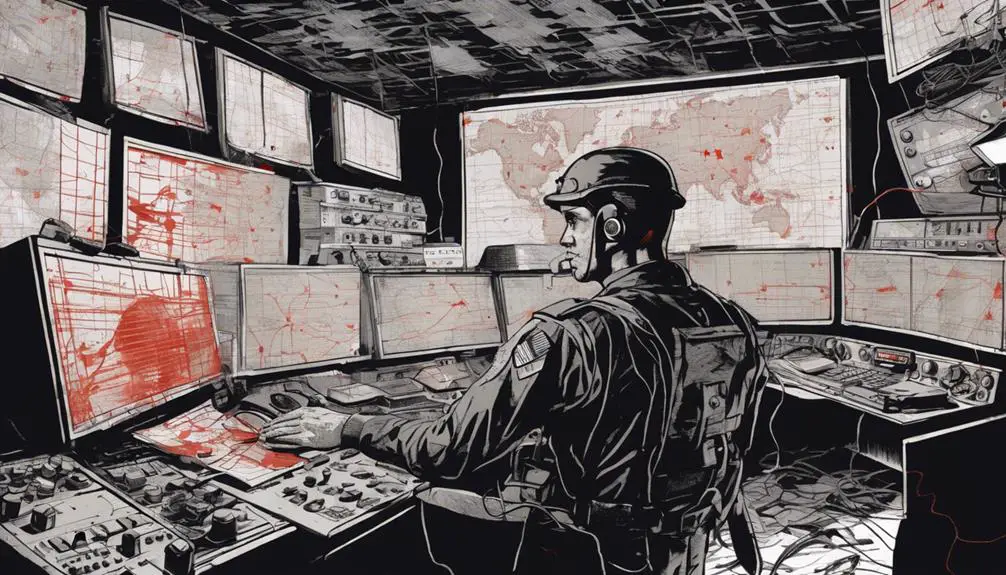
How can you guarantee your secure transmission techniques aren't compromised by enemy intercepts? In a high-stakes battlefield, it's essential to stay one step ahead of the enemy's intercept capabilities. To do so, employ Frequency Hopping, a technique that rapidly switches your transmission frequency among many different frequency channels, making it extremely difficult for enemies to intercept your signal.
Another effective countermeasure is Cryptic Messaging. This involves encoding your messages using complex algorithms, making it nearly impossible for interceptors to decipher the content. By combining these two strategies, you can greatly reduce the risk of your transmission being intercepted and compromised.
Real-Time Situational Awareness
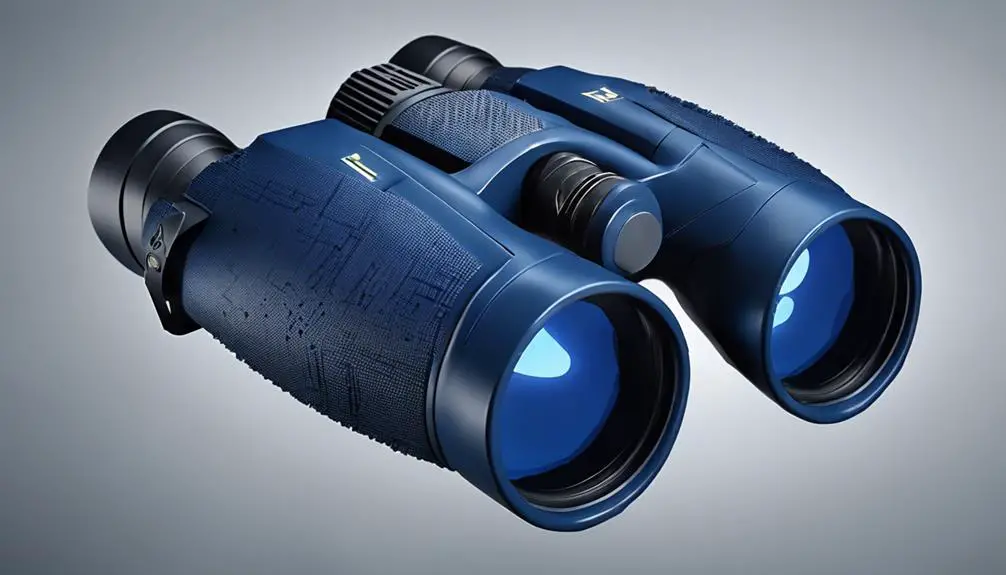
Stay ahead of the battlefield curve by leveraging real-time situational awareness, which enables you to track enemy movements, monitor friendly forces, and adjust your tactics accordingly. This critical element of modern warfare gives you the upper hand in combat by providing constant battlefield updates. With real-time situational awareness, you can pinpoint enemy positions, monitor their movements, and anticipate their next move. This allows you to make informed decisions quickly, seizing the initiative and gaining information superiority.
In today's fast-paced battlefield, real-time situational awareness is essential for success. It integrates data from various sources, including sensors, drones, and intelligence reports, to provide a detailed picture of the battlefield. This enables you to identify vulnerabilities, exploit weaknesses, and execute effective countermeasures. By staying informed and adapting quickly, you can outmaneuver the enemy, protect your forces, and achieve mission objectives. In the heat of battle, real-time situational awareness is your most valuable asset, giving you the edge you need to dominate the battlefield.
Frequently Asked Questions
What Are the Consequences of Misusing Military Slang in a Real-World Scenario?
When you misuse military slang in a real-world scenario, you risk creating Mission Critical Miscommunication. In high-stakes situations, incorrect terminology can lead to Radio Silence Consequences, putting lives and operations at risk. You may unintentionally convey false information, causing confusion and delay. This can have devastating effects, such as compromised missions, injuries, or even loss of life.
Can Civilians Legally Use Military Slang in Personal Communication Devices?
You're wondering if you can legally use military slang in personal communication devices. The answer is, it depends. In the US, the FCC regulates personal frequency allocation, and using military slang might not be an issue. However, if you're using encrypted transmission, that's a different story. Without proper authorization, you could be violating federal laws. Bottom line: unless you're authorized, stick to approved channels and protocols to avoid legal trouble.
Are There Any Cultural Differences in Military Slang Usage Worldwide?
You'll find that cultural differences in military slang usage vary greatly worldwide. Regimental dialects, shaped by local languages and histories, create unique linguistic diversity. In the US, for instance, military slang is heavily influenced by American English, while in the UK, Royal Military slang draws from British English. In India, Hindi and regional languages impact military slang. You'll need to take into account these differences when communicating with international military forces.
How Do Military Personnel Stay Updated With New Slang Terms and Acronyms?
Did you know that the US military adds around 100 new slang terms every year? To stay updated, you'll likely undergo slang training modules as part of your military training. These modules cover the latest terminology, ensuring you're fluent in the language of the military. Additionally, online terminology resources, like the Department of Defense's terminology database, provide you with a detailed guide to military slang and acronyms, helping you stay current and effective in communication.
Can Military Slang Be Used in Non-Combat Situations, Such as in Disaster Relief?
You're wondering if military slang can be used in non-combat situations, like disaster relief. The answer is yes, it can be beneficial in humanitarian ops. In these situations, communication barriers can hinder effective response. Using military slang can facilitate clear communication among responders, ensuring a more efficient response. It's important to remember that slang can be context-dependent, so it's vital to adapt and use terms that are universally understood in the relief effort.

